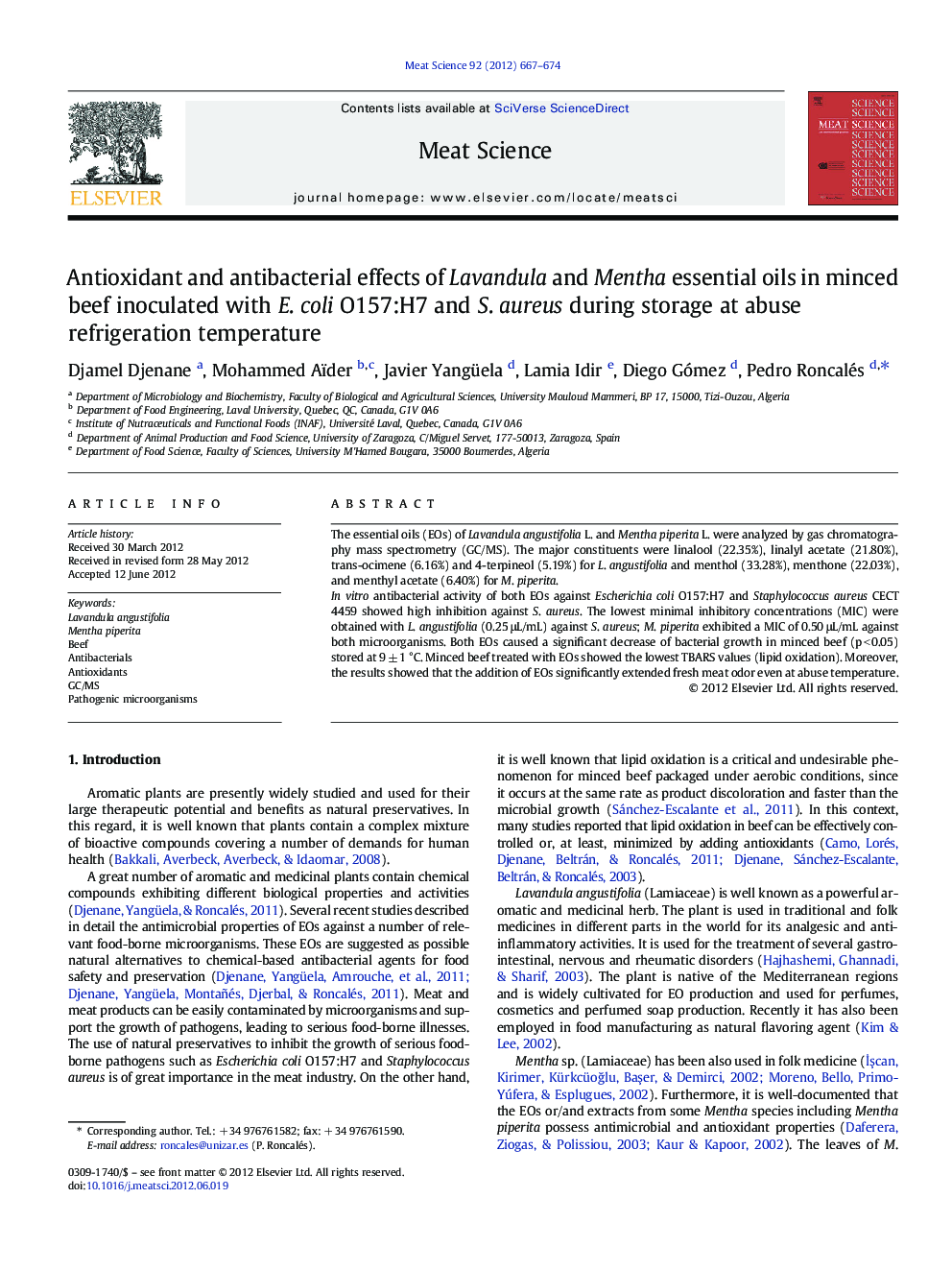| Article ID | Journal | Published Year | Pages | File Type |
|---|---|---|---|---|
| 5792056 | Meat Science | 2012 | 8 Pages |
The essential oils (EOs) of Lavandula angustifolia L. and Mentha piperita L. were analyzed by gas chromatography mass spectrometry (GC/MS). The major constituents were linalool (22.35%), linalyl acetate (21.80%), trans-ocimene (6.16%) and 4-terpineol (5.19%) for L. angustifolia and menthol (33.28%), menthone (22.03%), and menthyl acetate (6.40%) for M. piperita.In vitro antibacterial activity of both EOs against Escherichia coli O157:H7 and Staphylococcus aureus CECT 4459 showed high inhibition against S. aureus. The lowest minimal inhibitory concentrations (MIC) were obtained with L. angustifolia (0.25 μL/mL) against S. aureus; M. piperita exhibited a MIC of 0.50 μL/mL against both microorganisms. Both EOs caused a significant decrease of bacterial growth in minced beef (p < 0.05) stored at 9 ± 1 °C. Minced beef treated with EOs showed the lowest TBARS values (lipid oxidation). Moreover, the results showed that the addition of EOs significantly extended fresh meat odor even at abuse temperature.
⺠Lavandula and Mentha EOs inhibit in vitro pathogens E. coli O157:H7 and S. aureus. ⺠Inhibition was confirmed in minced meat at abuse refrigeration temperature. ⺠Practical application for pathogen control in meat processing is foreseeable.
